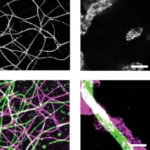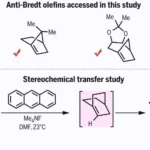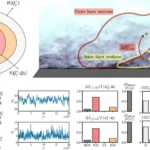Key Points
- MIT’s new transistors bypass silicon’s minimum voltage constraints using quantum mechanics.
- The transistors use quantum tunneling to switch at lower voltages, reducing energy consumption.
- Vertical nanowire design allows ultra-small, energy-efficient transistors with high performance.
- Electron confinement in tiny spaces boosts tunneling capabilities, enabling low-voltage operation. The new design performs 20 times better.
MIT researchers are pioneering a new generation of transistors that could overcome the limitations of silicon-based semiconductors. The research was published in Nature Electronics. This advancement uses quantum mechanical properties and promises to enhance energy efficiency and performance in electronic devices, addressing the demand for faster, AI-driven computations.
Traditional silicon transistors, critical components in modern electronics, are hindered by the “Boltzmann tyranny” limit, which dictates a minimum voltage required for switching at room temperature. This voltage requirement restricts energy efficiency, posing a challenge as electronics advance. To bypass this limit, MIT’s team developed three-dimensional transistors using gallium antimonide and indium arsenide rather than silicon. These materials enable quantum tunneling, a phenomenon where electrons pass through an energy barrier instead of moving over it, allowing for lower-voltage operation with high performance.
The team, led by MIT postdoc Yanjie Shao, engineered the transistors with nanowire structures, just a few nanometers in diameter. These ultra-compact devices provide steep switching slopes, enabling efficient on-off transitions at lower voltages than silicon transistors. Such precision allows more transistors to fit onto a chip, creating faster and more powerful electronics with increased energy efficiency. Shao explains that this technology could potentially replace silicon while performing similar functions more efficiently.
One of the main challenges in developing tunneling transistors is balancing switching speed with high current for adequate power. The team achieved a sharp switching slope and a high current by precisely controlling the transistors’ 3D geometry at MIT.nano. This feat is due to quantum confinement, where electrons are restricted to extremely small spaces, enhancing their ability to tunnel through barriers. This precise fabrication process enables the transistors to outperform conventional designs, with a switching performance 20 times higher than previous tunneling transistors.
MIT professor Jesús del Alamo noted that while this breakthrough represents significant progress, further refinements in the manufacturing process are needed to make these transistors commercially viable.
Current efforts focus on uniformity across chips; even minute size variations can impact performance. The team is also exploring additional transistor structures to improve device consistency. MIT’s innovations in quantum tunneling transistors could open new avenues in nanoelectronics, moving beyond silicon’s physical limits.










